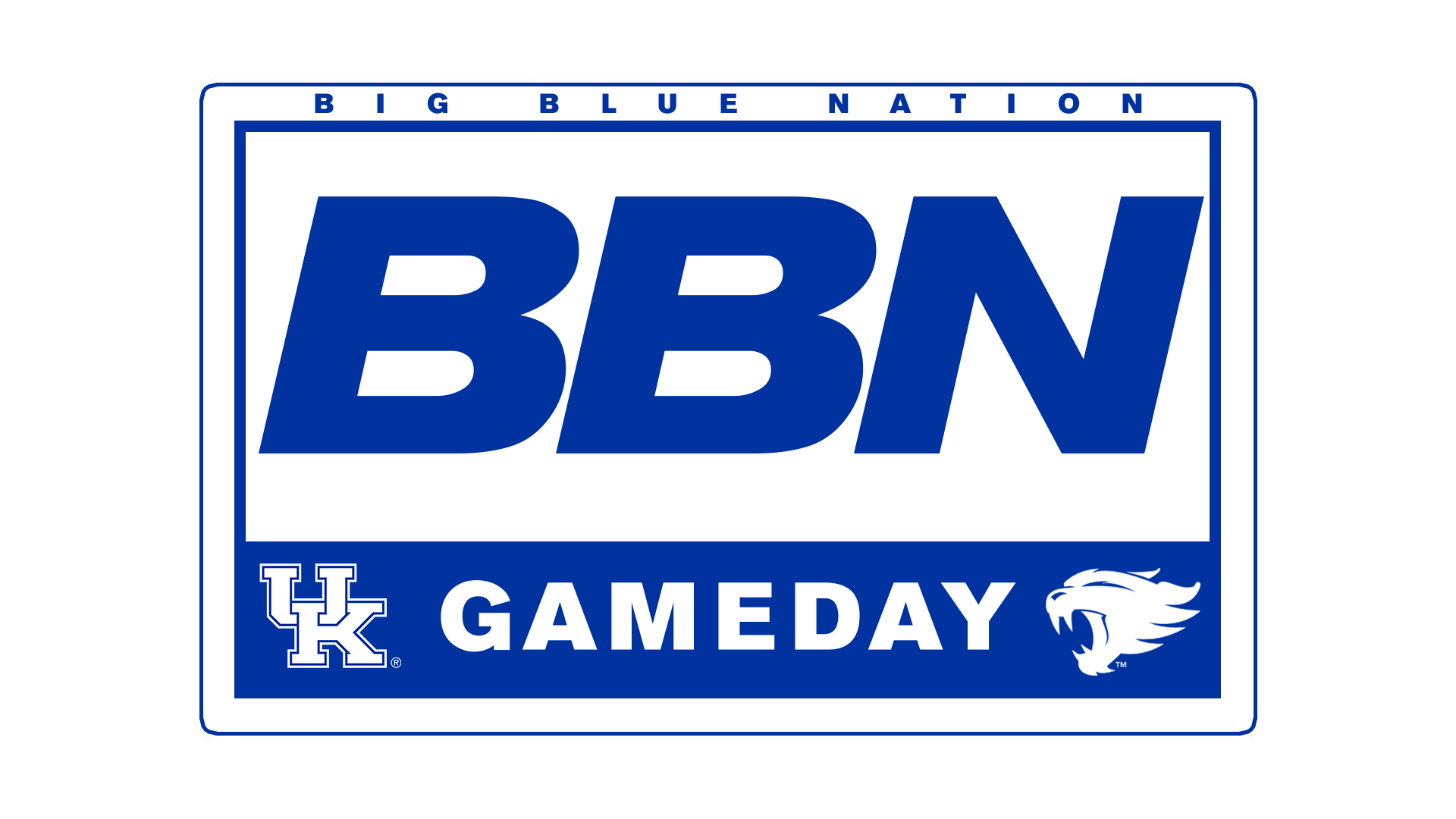Maxwell Smith completed 35-of-50 passes for 280 yards and two touchdowns in his first game leading UK’s new no-huddle offense. (Barry Westerman, UK Athletics)
Under Joker Phillips and Randy Sanders, Kentucky has come to be known for its pro-style offense. Quarterbacks like Andre’ Woodson and Mike Hartline thrived in the system and UK entered an era of unprecedented success.The Wildcats’ offense in the 2012 season opener bore little resemblance to that more traditional attack. UK lined up almost exclusively in the shotgun, eschewing the I-formation for all but a few plays early in the game. The Cats turned to a fast-paced, no-huddle offense that allowed them to run 70 plays in just 23:39 of possession.The change was a big one, and it’s not just a one-time thing. Phillips and Sanders recognized their personnel was evolving, realized they were going to have to change too and it all started with their new starting quarterback.Maxwell Smith arrived on campus in December 2010, practicing with his new team an extra semester as it prepared for the BBVA Compass Bowl. It didn’t take more than a few sessions for Phillips to realize he had a different kind of animal on his hands.”This is what this guy is, a guy that can spread the ball all over the field, get it out of his hands quick,” Phillips recalls thinking of Smith. “He can manage protections. We really started then thinking about transitioning to this type of offense.”It didn’t stop with Smith. As Smith’s classmates at wide receiver came arrived on campus a few months later during the summer, Phillips noticed a change there too.”We saw the type of receivers we were getting,” Phillips said. “We have a couple big guys in the upperclassmen, but in the lower classes, we’ve got the small, nifty little receivers.”Wide outs like Daryl Collins (5-foot-11, 196 pounds) and Demarco Robinson (5-10, 158 pounds) were much more likely to catch a five-yard pass and turn it into a big gain than rising up over a defender for a downfield grab. They fit perfectly with Smith’s skill set.That didn’t mean the switch was made though. There was background work to be done and Sanders left no stone unturned.”I talked to everybody I knew that had experience with it,” Sanders said. “I talked to a lot of different places. I’m not going to start naming names and things like that, but we did a lot of research on it, a lot of study on it and it wasn’t something that was just a fly-by-night decision.”Once the decision was made, everyone involved committed to it. UK spent most of the spring working in the no-huddle, then did so almost exclusively in the fall. When Smith won the starting quarterback job two weeks into camp, it was done, though Kentucky’s closed practices kept it fairly secret.Not long into UK’s first possession against Louisville, the secret was out.More often than not, Smith would receive snaps in the shotgun with 10 seconds or more still on the play clock. With rare exceptions, the Wildcats went directly to the line of scrimmage instead of the huddle. The new approach delivered immediate results.UK’s offensive struggles in 2011 were well documented, but the 2012 group was significantly more productive in spite of fielding many of the same players. The Cats had more first downs against Louisville than in any game last season. Smith’s 35 completions were more than Kentucky had as a team in any game in 2011, and his completion percentage of 70 is nearly 20 points better than UK’s 2011 average.”The thing he has the ability to do that lends itself to it is he sees things well, he has the ability to get the ball out fast and he’s phenomenally accurate,” Sanders said. “A few of the little screens and things like that we threw Sunday, it’s amazing how fast he’s able to catch the snap, get a hold of the ball and throw it to a receiver across the field as accurately as he did that.”Smith sees the new offense as the kind any signal caller would like to play in.”I love it,” Smith said. “What quarterback doesn’t want to throw the ball, you know?”He completed passes to 11 different receivers in his 50 attempts and, perhaps even more importantly, was sacked just twice. Last year, Wildcat quarterbacks were sacked once for every 9.6 pass attempts as the offensive line battled early-season injuries. In the opener, the five starting linemen played every offensive down.”I thought they played well,” Smith said of his line. “They still have things to work on and so do I. The whole team does.”Smith is right, because in spite of all the positive signs, UK managed just 14 points. Poorly timed mistakes put an end to four different drives that got inside the U of L 25-yard line. With the hurry-up offense, execution in the red zone will be something to keep an eye on.Another area to watch is the running game. Due more to the fact that the Cats were trailing than the new offense, just 19 of UK’s 70 plays were rushes and even that number is somewhat misleading. Two of those plays were sacks, one a Smith scramble, one a kneel-down at the end of the first half and one a fake punt. Excluding those plays, Kentucky ran the ball 14 times for 104 yards. “I thought we ran the ball very efficiently last week. I wish we had been able to run it more,” Sanders said. “The game kind of got away from us and we weren’t able to run it as much as I would like to have.”When the Cats get to test out the new offense for the second time on Saturday at 7:30 p.m. against Kent State, you can rest assured that running the ball will be a priority. Even so, Smith – the pass-happy quarterback – will have plenty of chances too.Smith showed fans the decision-making and accuracy that made his coaches overhaul the way they do business in the Louisville game. Now, it’s all about fine-tuning.”We threw it and caught it well,” Sanders said. “I thought we blocked well. We just didn’t score enough points. We got to correct those four, five or six plays where we score more points.”



